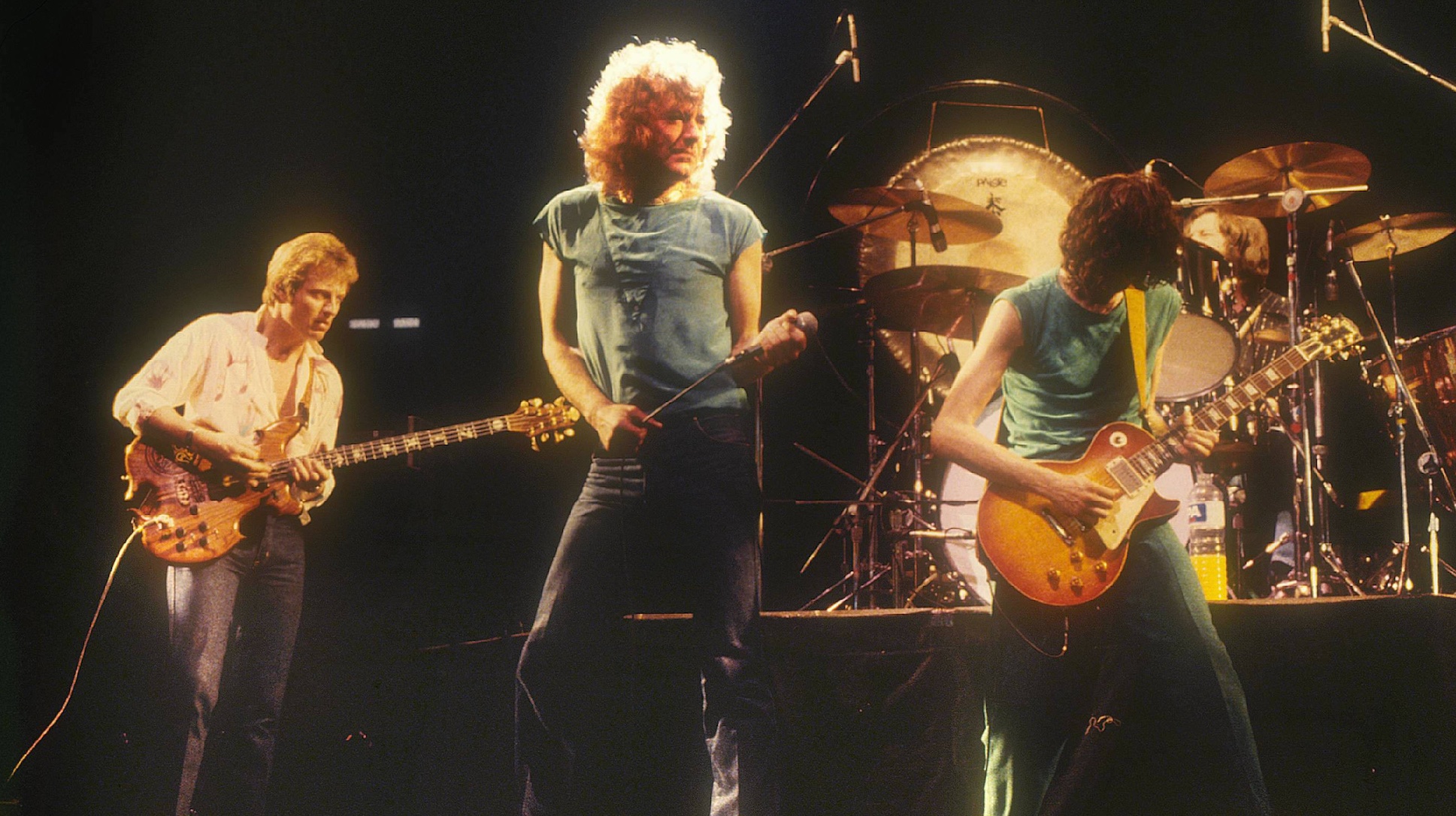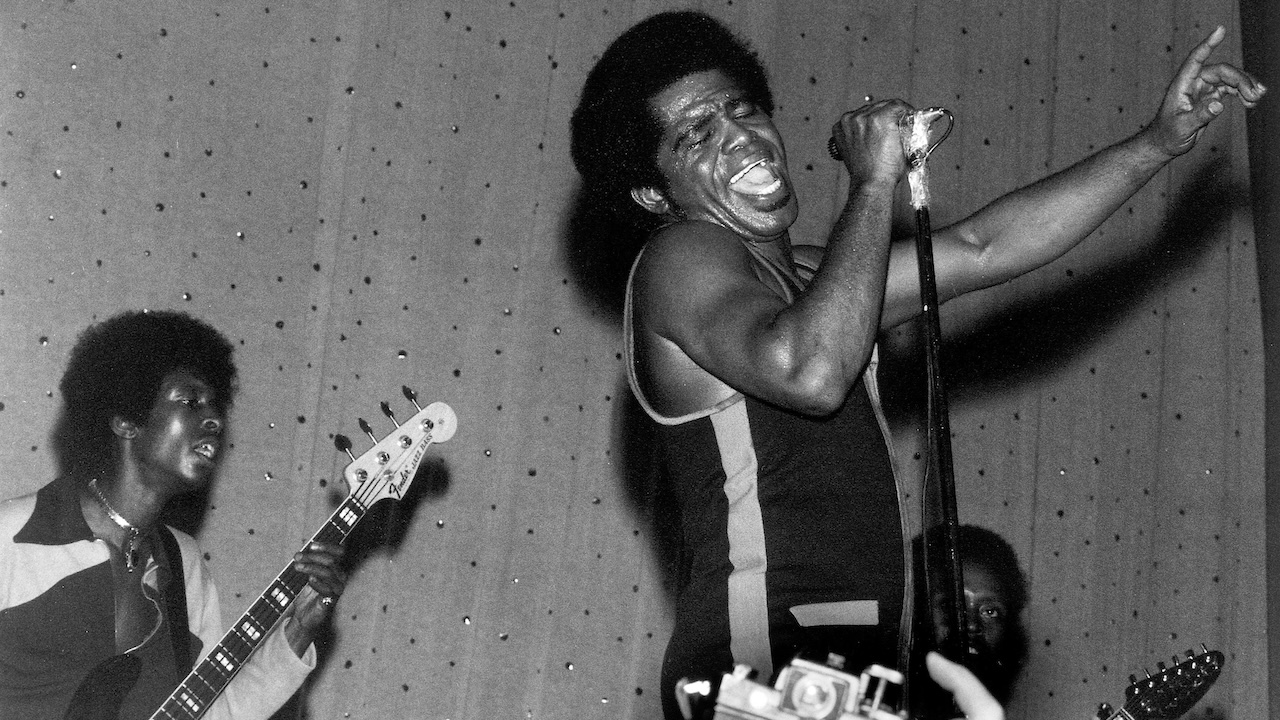“That’s one of the things that made us sound so heavy”: Led Zeppelin’s Immigrant Song, Kashmir, and The Song Remains the Same are wildly different classic rock staples, but one key element ties them all together, says John Paul Jones
Zeppelin’s power lay in their timing, the low-end giant explains, but there was more in the method to the band's madness

Starting in 1996, Guitar World was honored to publish a handful of lesson columns authored by Led Zeppelin bassist John Paul Jones. The following is one of these columns. It has been edited in certain instances for use online.
At the end of last month's column, we touched upon the use of octaves in basslines. I cannot emphasize enough how useful this simple interval can be for coming up with interesting and memorable parts.
In addition to being very effective for creating catchy, fat-sounding single-note “stomp grooves,” like the main riff from The Wanton Song, which we looked at last time, octaves are also great for constructing strong supportive basslines.
This month, we'll look at some examples of this kind of octave usage from the Led Zeppelin catalog.
One particularly effective way to use octaves is to match the low note and the high note with a drummer's kick and snare drum, respectively. A good example of this type of bass-and-drums octave synchronization is Nobody's Fault But Mine, from [Led Zeppelin's 1976 album] Presence.
I played the syncopated E octave part with Bonzo [Led Zeppelin drummer John Bonham], behind the eerie guitar and vocal melody between the verses (at around 2:36), with an eight-string bass, which is what I used for the entire Presence album.
If you listen to the recording, you'll notice how the low E's are played in tandem with Bonzo's kick drum while the high E's are played in tandem with his snare. Also notice the effective use of rests here.
All the latest guitar news, interviews, lessons, reviews, deals and more, direct to your inbox!
The object was to make the bass and drums sound like one instrument. I think that's one of the things that made Zeppelin sound so heavy – we would play all those little phrases absolutely together.
Another good and rather obvious example of this same kind of octave-synchronization is Page's main riff to Immigrant Song.
For the first two bars of the verse section, I took an F# octave figure and simply moved it down a whole-step to E to keep the punchy groove going with the drums while Jimmy sustained an open E chord. I used a pick on that one, too. Listen to the right channel to hear the bass clearly.
One very cool thing about using octaves in a bassline is that you can take a pedal point figure and make it more “busy” and animated without straying from the root and obscuring the harmony. Not that straying from the root is necessarily a bad thing – sometimes it sounds good to do that – but in certain situations you need to play something that's harmonically “grounded,” and octaves are always a safe bet as far as that's concerned.

For example, if you listen to the bass part during the verse sections of Kashmir, you'll hear me going back and forth between the open low D note and the high D at the 12th fret.
During the fast parts of The Song Remains the Same, I used octaves everywhere, particularly during the parts where Jimmy strums an A7sus4-A7sus4(add6) chord sequence over and over.
For those parts, I concentrated on locking in with Bonzo's kick and snare drum using A octaves. I don't think the groove would have sounded quite as powerful had I chosen just to pedal on the low A.
I based what I would play behind Page's D-Dsus4 changes during the section that immediately follows around the D root-fifth-octave shape (D-A-D) in the 5th position, and also used the fourth (G) to create a catchy little bass tune.
Again, notice the effective use of rests in this figure. Bonzo and I would always try to play this part as tightly as possible, even while he was splashing away on the open hi-hat.
- This lesson originally appeared in the February 1997 issue of Guitar World. Subscribe and save.
The bassist for Led Zeppelin, one of rock's greatest bands, John Paul Jones is universally recognized as one of the greatest bassists of all time. He's also a highly regarded multi-instrumentalist, arranger, and producer.
You must confirm your public display name before commenting
Please logout and then login again, you will then be prompted to enter your display name.


